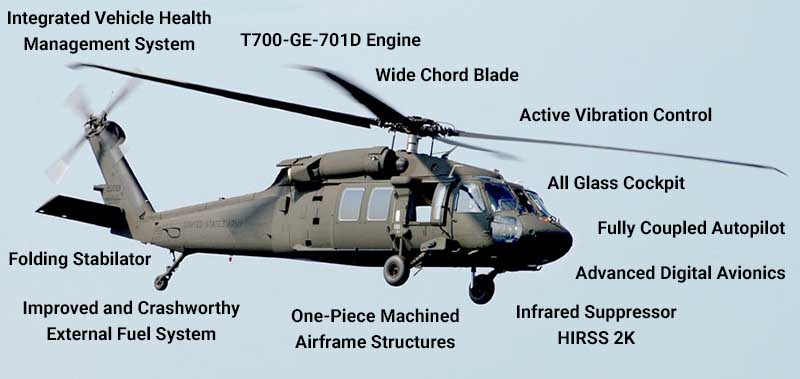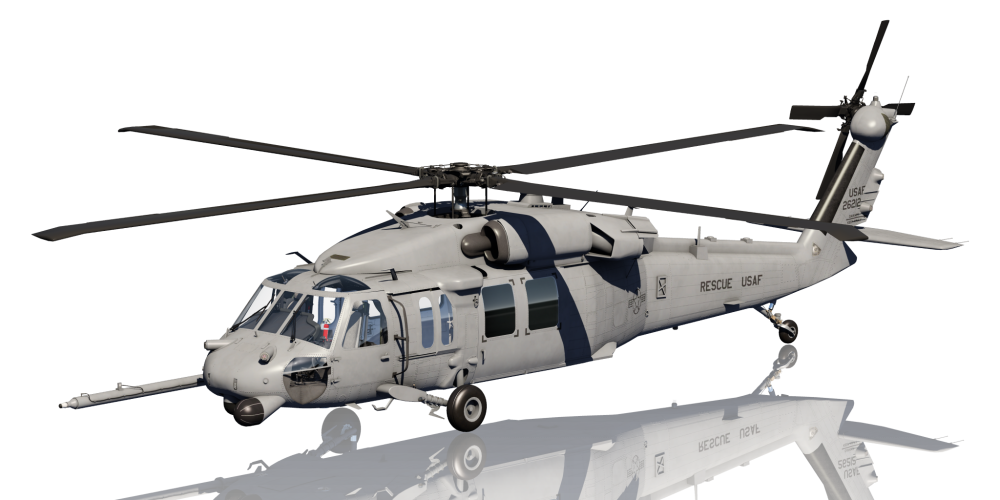The UH 60 and Its Contribution to Airborne Workflow in Essential Objectives
The UH 60 and Its Contribution to Airborne Workflow in Essential Objectives
Blog Article
Discover the Convenience of the UH-60 Aircraft
The UH-60 airplane stands as a testimony to design excellence, demonstrating remarkable flexibility across a spectrum of altruistic and armed forces procedures. Its design allows for seamless transitions between numerous roles, from army transportation to medical evacuation, all while outfitted with advanced modern technology for optimal efficiency in challenging environments. As we check out the historical context of the UH-60 and its advancing applications, it ends up being clear that its value prolongs far past traditional functions, triggering a closer exam of its future potential in modern aeronautics and protection techniques. What lies in advance for this legendary airplane?
Background of the UH-60
The UH-60 Black Hawk helicopter has a fabled history that mirrors advancements in armed forces aviation and the developing requirements of the united state Army. Originally developed in the late 1960s by Sikorsky Airplane, the Black Hawk was designed to change the older UH-1 Iroquois, typically recognized as the "Huey." The helicopter made its initial flight in 1974 and was formally presented into service in 1979.
The Black Hawk was developed to meet the Army's needs for a tactical transport helicopter capable of bring troops and materials in a selection of operational atmospheres. Its design highlighted resilience, ability to move, and rate, making it appropriate for a wide variety of goals. The helicopter's advanced blades system and avionics considerably improve its efficiency contrasted to its predecessors, enabling it to run efficiently in unfavorable climate condition and at high elevations.
Throughout the years, the UH-60 has undergone numerous upgrades and alterations, ensuring its relevance in contemporary warfare. Therefore, it has actually come to be a symbol of adaptability and dependability, serving in different capabilities, consisting of medevac, logistics, and special operations, both domestically and internationally.
Military Applications
Identified for its flexibility, the UH-60 Black Hawk offers a wide range of army applications that prolong much past its initial layout as a tactical transport helicopter. Its robust airframe and advanced avionics make it an important property in various functional functions.
Among the primary army applications of the UH-60 is its usage in army transportation, efficient in lugging as much as 11 soldiers or a combination of employees and freight. This convenience is additionally boosted by its capability to carry out medical emptying missions, allowing fast reaction to battlefield injuries with onboard clinical employees and tools.
The UH-60 likewise plays an important role in reconnaissance and surveillance operations, furnished with advanced sensing units that offer real-time knowledge. Its ability to operate in diverse atmospheres, including adverse climate problems and at night, improves its performance in objectives calling for stealth and precision.

Altruist Goals

Over the last few years, the UH-60 Black Hawk has confirmed invaluable in altruistic missions, showcasing its capacity to provide help and assistance in situation situations. Its convenience permits fast implementation in varied settings, whether responding to all-natural catastrophes, illness episodes, or problems that displace populaces.
The Black Hawk's capability to transport employees, clinical products, and food is essential in emergency feedback situations. With its innovative navigating systems and robust style, it can run in difficult problems, consisting of damaging weather condition and rugged terrain, making sure that help gets to those in need promptly.
Furthermore, the a knockout post aircraft's capability to carry out aerial evacuations assists in the speedy removal of hurt individuals from unattainable places, considerably improving survival rates in emergencies. This ability has been shown in different operations, from quake alleviation initiatives to flood rescues.
Furthermore, the UH-60 works as a platform for control amongst multiple companies, boosting general effectiveness in altruistic operations. Its flexibility and integrity make it a foundation in international relief initiatives, strengthening the relevance of armed forces properties in international altruistic responses. On the whole, the UH-60 Black Hawk stands as an important tool in addressing immediate human needs.
Technical Innovations
Countless technological advancements have actually boosted the capabilities of the UH-60 Black Hawk, making it a premier platform for army and humanitarian operations. One considerable innovation is the assimilation of sophisticated avionics, which consists of electronic flight controls and improved situational recognition systems. These innovations boost pilot efficiency and objective effectiveness, enabling for safer navigating in complicated settings.
The aircraft's durable communication systems make it possible for real-time data sharing amongst units, improving sychronisation throughout goals. In addition, the incorporation of composite materials in the airframe lowers weight while raising resilience, leading to enhanced gas performance and payload capability.
The UH-60 additionally includes advanced blades systems that give exceptional lift and maneuverability, allowing it to run in varied conditions, including high elevations and severe temperature levels. In addition, the incorporation of modern sensor modern technology permits enhanced reconnaissance and target identification, making the aircraft functional in battle and non-combat circumstances.
Last but not least, the capability for modular goal devices installment ensures that the UH-60 can be quickly adjusted to satisfy certain functional requirements, reinforcing its role as an important device for military and humanitarian efforts alike. These developments jointly strengthen the UH-60 Black Hawk's online reputation as a state-of-the-art aircraft.
Future of the UH-60

Future iterations of the UH-60 will likely feature advanced materials and styles that enhance longevity while lowering weight, enhancing performance and gas effectiveness. The combination of expert system and equipment knowing will certainly assist in improved situational recognition and decision-making capabilities, eventually raising goal success rates. Recurring upgrades to interaction systems will ensure seamless interoperability with other platforms and allied pressures.
With the enhancing focus on multi-domain procedures, the UH-60's convenience will certainly allow it to support a variety of missions, from army transport to clinical discharge and reconnaissance. In addition, the potential for unmanned versions or improved automation can additionally increase its operational capacities.

Verdict
The UH-60 airplane shows outstanding convenience across different operational contexts, solidifying its duty in army and altruistic efforts. UH 60. Its versatility to numerous objectives, incorporated with sophisticated technical innovations, ensures optimal efficiency in varied settings. As the demands of modern-day war and crisis feedback advance, the ongoing advancement of the UH-60 will certainly be important. This aircraft's enduring relevance in military aeronautics emphasizes its vital payment to critical protection and emergency procedures.
The UH-60 aircraft stands as a testimony to design excellence, showing exceptional adaptability throughout a spectrum of humanitarian and army operations.The UH-60 Black Hawk helicopter has a fabled background that mirrors developments in armed forces air travel and the evolving needs of the U.S. Army. On the whole, the UH-60 you could try these out Black Hawk stands as a vital device in addressing immediate human demands.
Numerous technical technologies have actually enhanced the abilities of the UH-60 Black Hawk, making it a premier platform for military and altruistic procedures.The UH-60 airplane demonstrates remarkable flexibility throughout different operational contexts, solidifying its function in army and altruistic efforts.
Report this page